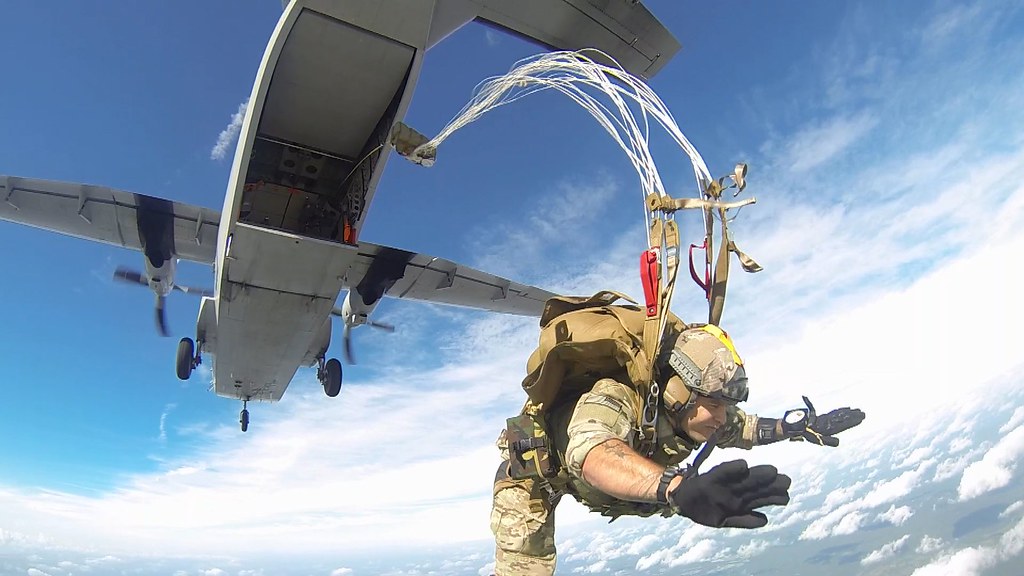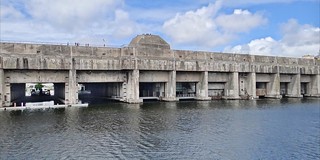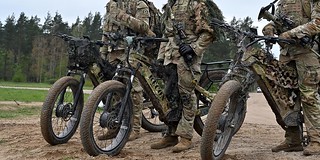C-41A: the Spanish aircrafts used by the United States special operations forces
The United States is known for having some of the best special operations military groups in the world.
There is a lesser known fact, and it is the use of Spanish planes by these special operations groups. Many Spaniards who have seen the title of this entry will not even know which plane is the C-41A, since in Spain it is known as CASA C-212 Aviocar, an excellent small tactical transport aircraft that made its first flight on March 26, 1971, being acquired by a total of 31 military operators and 61 civilians, making it the greatest success of the Spanish aeronautical industry in its entire history.

Up to 2012, a total of 483 Aviocars were built. The C-212 is an aircraft with dimensions of 16.15 meters long and 20.28 meters of wingspan and can reach a speed of up to 370 km/h h. It can carry up to 25 soldiers or 2,820 kg of cargo and is capable of operating on short and poorly prepared runways, which makes it an ideal aircraft to support special operations groups.

The United States Army Special Operations Command (USASOC) purchased six C-212-200s in the early 1980s. Similarly, the United States Air Force purchased an Aviocar for those same dates. The first USASOC Aviocar arrived in the US in 1983 and was lost in an accident on December 1, 1989 at Naval Air Station Patuxent River (Maryland). The other five USASOC Aviocars and the only one acquired by the USAF arrived in the US in 1975. The models, construction numbers (CN) and numerals of the seven aircraft were as follows, according to data published in aviationsmilitaires.net and rzjets.net:
- US Army - CASA 212-200 Aviocar - cn296 - 88-0321 - 1983
- US Army - CASA 212-200 Aviocar - cn336 - 90-0168 - 1985
- US Army - CASA 212-200 Aviocar - cn348 - 90-0169 - 1985
- US Army - CASA 212-200 Aviocar - cn332 - 90-0177 - 1985
- US Army - CASA 212-200 Aviocar - cn347 - 90-0178 - 1985
- US Army - CASA 212-200CC Aviocar - cn328 - 87-0159 - 1985
- USAF - CASA 212-200 Aviocar - cn320 - 87-00158 - 1985

According to GlobalSecurity.org, the C-41A designation was applied to these aircraft late, in 2002, when they had already been in service for 17 years. "Even with its small size and rarity for the Army, the CASA C-212 Aviocar aircraft has proven to be a diverse and capable aircraft", added that website. These aircraft, which assume 75% of USASOC's workload, are used in troop infiltration and exfiltration flights, supply drops, and air operations in realistic scenarios during training.
On March 20, 2014, USASOC announced that it would replace the C-41As of its Flight Company (UFC) by Alenia C-27J Spartan made in Italy. Curtis Adams, the UFC Commander, stated: "Over the years, UFC personnel have figured out how to get the most effectiveness and efficiency out of CASA-212. I look forward to doing so. with the C-27J, as we learn the capabilities and how it can best support." However, as of February 2020 the USASOC was still using its C-41As.

As noted by Scramble Magazine in August 2020, the US Department of Defense signed a contract to modernize the five USASOC C-41As, for an amount of 10 million euros, incorporating new avionics. In other words, despite the arrival of the C-27J Spartan, the Aviocar has proven to be such a capable aircraft that it will continue to serve in USASOC. According to Scramble Magazine, currently 90-0168, the 90-0177 and 90-0178 are operated by the USASOC at Simmons AAF Airfield, Fort Bragg, North Carolina, while 87-0159 and 90-0169 are operated by the USASOC at the Laguna aerodrome, in the Yuma test range (Arizona). Fort Bragg's three Aviocares regularly do parachute drop flights with the John F. Kennedy Special Warfare Center and School.
You can see below some photos of the C-41A of the USAF and the USASOC , published by the US National Archives, the US Army and the DVIDS multimedia portal of the US Armed Forces.

A skydiver jump from a USASOC C-41A , 90-0178, on December 11, 2013 (photo: NARA).

U.S. Army skydiving instructors stand by a C-41A , 90-0168, at the St. Mere drop zone at Fort Bragg, N.C., on November 24, 2015 (photo: NARA).

A paratrooper jumps from a US Army C-41A , 90-0168, at the Luzon drop zone at Camp Mackall, North Carolina, during a .S. Army Civil Affairs and Psychological Operations Command training exercise and (photo: NARA).

Two USASOC skydiving instructors next to a C-41A, 90-0177, July 27, 2016 (photo: NARA).

A skydiver jump from a USASOC C-41A on December 11, 2013.

Night cargo drop from a C-41A in Bagram, Afghanistan, on January 1, 2010 (photo: US Army/DVIDS).

US Army paratroopers board a C-41A during an exercise at the John F. Kennedy Special Warfare Center and School (JFKSWCS) on January 11, 2016 (photo: NARA).

Un salto paracaidista desde un C-41A del USASOC el 27 de julio de 2016 (foto: US Army).

Un salto de operadores especiales de EEUU desde un C-41A en febrero de 2020 (foto: US Army).

Miembros del USASOC y de la 55th Signal Company (Combat Camera) a bordo de un C-41A del USASOC en la zona de salto de St. Mere, en Fort Bragg, Carolina del Norte, el 24 de noviembre de 2015 (foto: NARA).

Un lanzamiento de pasquines desde un C-41A durante una misión nocturna en la provincia de Parwan, en Afganistán, el 1 de enero de 2010 (foto: US Army/DVIDS).

Un C-41A del USASOC durante un salto paracaidista del John F. Kennedy Special Warfare Center and School el 28 de marzo de 2019 sobre el aeródromo Laurinburg-Maxton (foto: US Army/DVIDS).

Un salto paracaidista desde un C-41A del USASOC el 28 de marzo de 2019 (foto: US Army/DVIDS).
|
Don't miss the news and content that interest you. Receive the free daily newsletter in your email: |
- Most read
- Eurofighter vs F-35: the opinions of professional pilots on these advanced fighters
- The firearms used by the Pontifical Swiss Guard, the smallest army in the world
- The icy deployment of the Spanish EF-18 and A400M planes under the snow in Lithuania
- NATO highlights and shows the 'air power' of the Spanish aircraft carrier 'Juan Carlos I'
- The United States Army shows its electric bicycles for reconnaissance missions
- The military salute: origin, types & curiosities
- The sad aspect that the aircraft carrier USS Kitty Hawk offers in its scrapping process

 ES
ES







Opina sobre esta entrada: